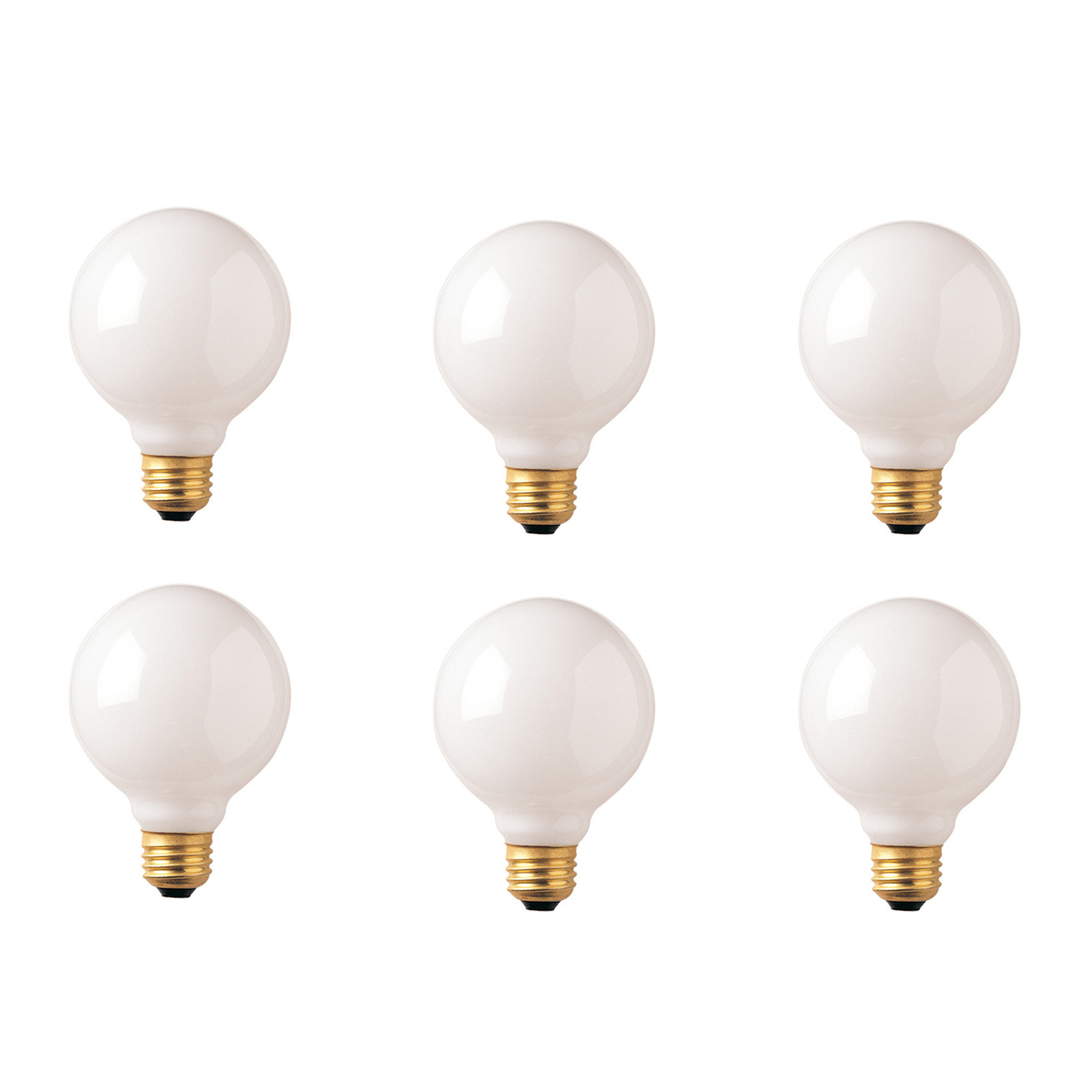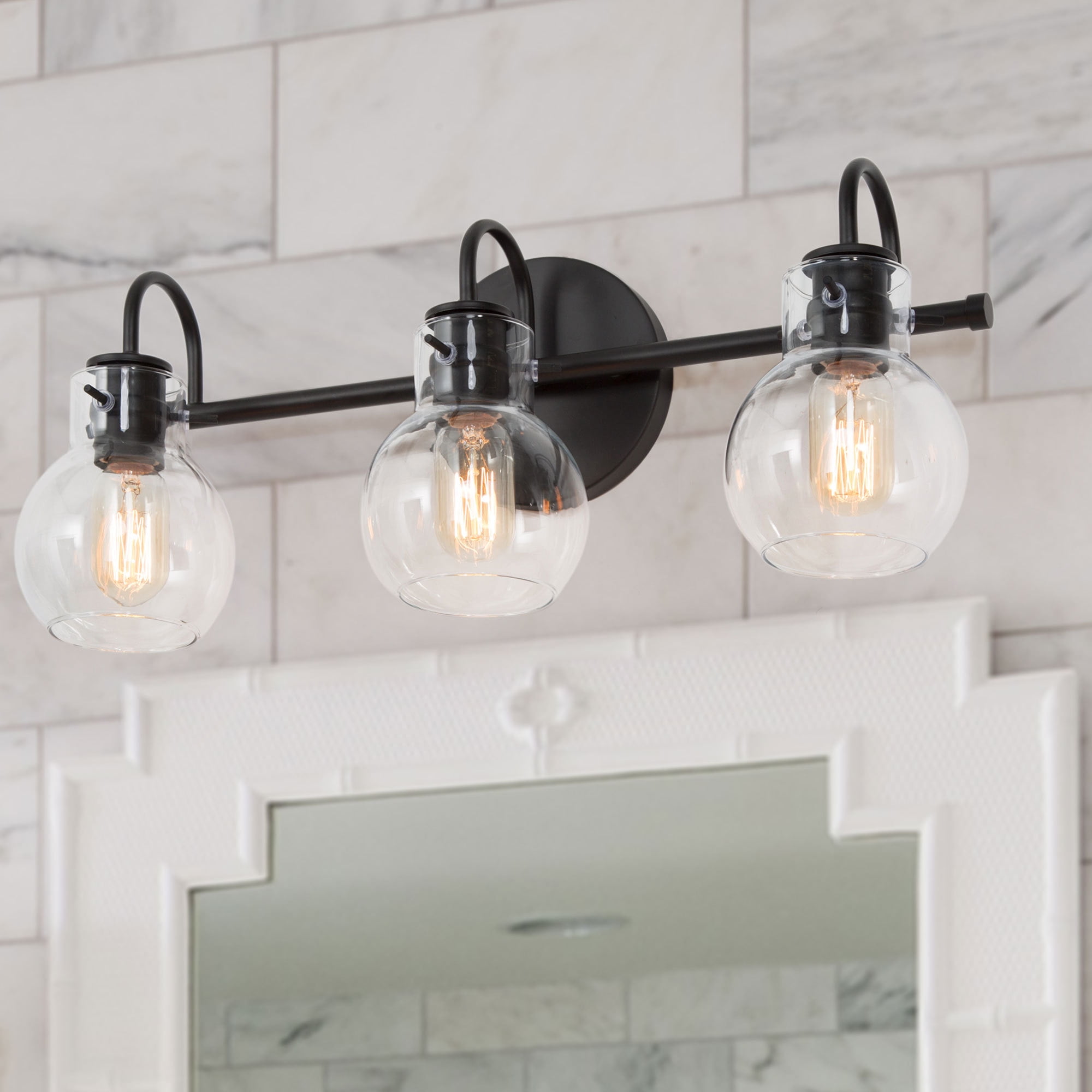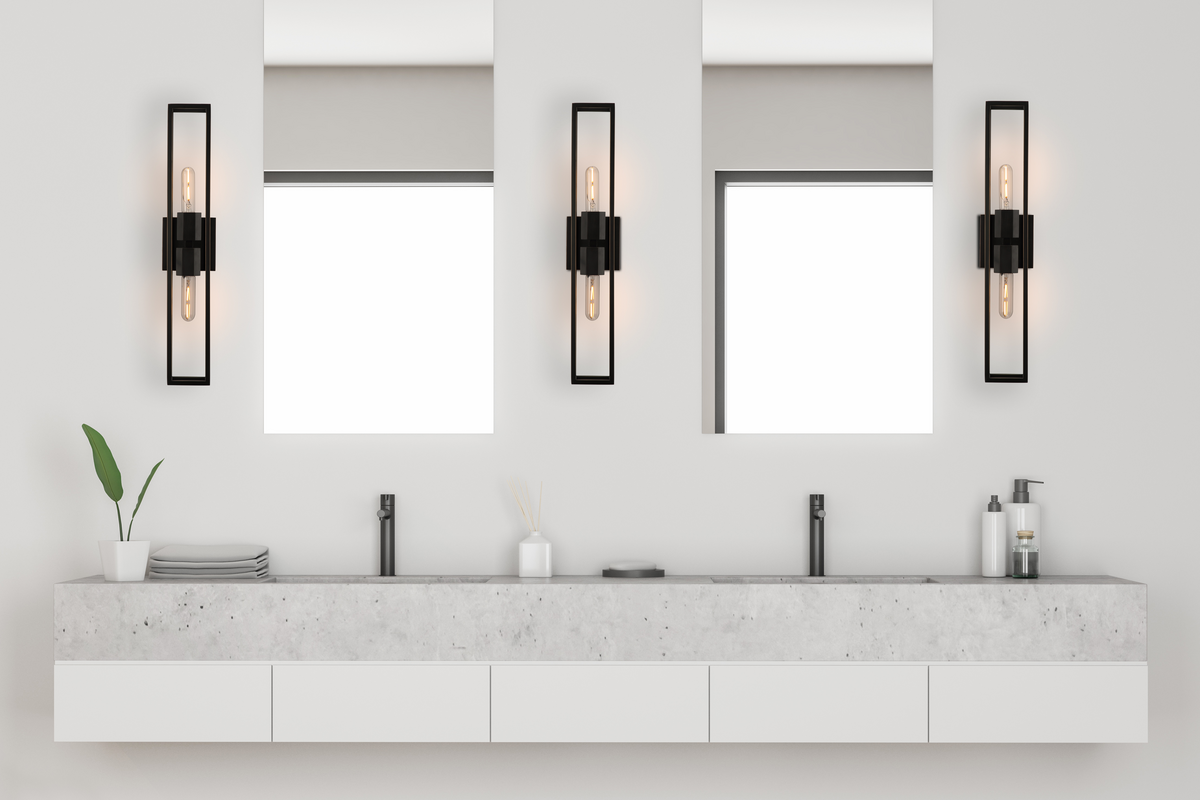Bulb Wattage Impact on Bathroom Ambiance

Bathroom vanity light bulb wattage – The wattage of a light bulb determines the amount of light it emits, which can significantly impact the ambiance of a bathroom. Higher wattage bulbs produce brighter light, while lower wattage bulbs emit a softer, more subdued glow.
Selecting the optimal wattage for your bathroom vanity light bulb is crucial for creating a well-lit space. Whether you’re looking to enhance the ambiance of your bathroom with house wallpaper or simply illuminate your daily routine, the right wattage will ensure a comfortable and functional space.
When choosing a bulb, consider the size of your vanity, the desired brightness level, and the overall aesthetic you’re aiming for.
Choosing the right wattage for your bathroom depends on several factors, including the size of the room, the amount of natural light available, and the desired atmosphere.
Wattage Recommendations for Different Bathroom Sizes, Bathroom vanity light bulb wattage
As a general rule, larger bathrooms require higher wattage bulbs to provide adequate illumination. For bathrooms between 50 and 75 square feet, a wattage range of 60 to 75 watts is recommended. For bathrooms between 75 and 100 square feet, a wattage range of 75 to 100 watts is suitable. And for bathrooms over 100 square feet, a wattage range of 100 to 150 watts is recommended.
For a bathroom vanity, the ideal light bulb wattage can vary depending on the size of the space and the desired brightness level. To create a cozy and inviting atmosphere, consider using warm-toned bulbs with a lower wattage. If you’re looking for a more modern and dramatic look, opt for fox wallpaper and pair it with brighter, cooler-toned bulbs.
Remember to adjust the wattage accordingly to achieve the perfect balance of illumination and ambiance.
Wattage Recommendations for Different Ambiance
In addition to the size of the bathroom, the desired ambiance should also be considered when choosing the wattage of the light bulbs. For a bright, invigorating atmosphere, higher wattage bulbs are recommended. For a more relaxing, spa-like ambiance, lower wattage bulbs are more suitable.
Energy Efficiency Considerations

When selecting bathroom vanity light bulbs, energy efficiency is a crucial factor to consider. Different bulb wattages consume varying amounts of energy, impacting both your energy bills and the environment.
Incandescent bulbs, while inexpensive, are highly inefficient, consuming a significant amount of energy as heat rather than light. Compact fluorescent lamps (CFLs) and light-emitting diodes (LEDs) are more energy-efficient alternatives, using less energy to produce the same amount of light.
Bulb Lifespan and Replacement Costs
The lifespan of a light bulb is another important consideration. Incandescent bulbs typically last around 1,000 hours, while CFLs last around 8,000 hours and LEDs last up to 50,000 hours. While LEDs have a higher upfront cost, their longer lifespan and lower energy consumption can save you money in the long run.
Environmental Impact
High-wattage bulbs consume more energy and produce more heat, contributing to greenhouse gas emissions. Energy-efficient bulbs, such as CFLs and LEDs, reduce energy consumption and environmental impact.
By choosing energy-efficient bulbs, you can not only save money on energy bills but also reduce your carbon footprint and contribute to a more sustainable future.
Bulb Type Selection for Optimal Lighting: Bathroom Vanity Light Bulb Wattage

Selecting the right type of light bulb for your bathroom vanity is crucial to achieving the desired ambiance and functionality. Each bulb type offers unique characteristics that cater to specific lighting needs.
Incandescent Bulbs
Incandescent bulbs have been a traditional choice, emitting a warm, yellowish light. However, they are relatively inefficient, consuming more energy compared to other types.
Compact Fluorescent Lamps (CFLs)
CFLs are more energy-efficient than incandescent bulbs, offering a wider range of color temperatures. They provide a brighter, whiter light but may take some time to reach full brightness.
Light-Emitting Diodes (LEDs)
LEDs are the most energy-efficient and long-lasting option, emitting a bright, customizable light. They offer excellent color rendering, beam angle control, and are dimmable for adjustable lighting.
Selection Guidance
- For warm, traditional ambiance: Incandescent bulbs
- For energy efficiency and a wider color range: CFLs
- For maximum energy efficiency, brightness, and customization: LEDs